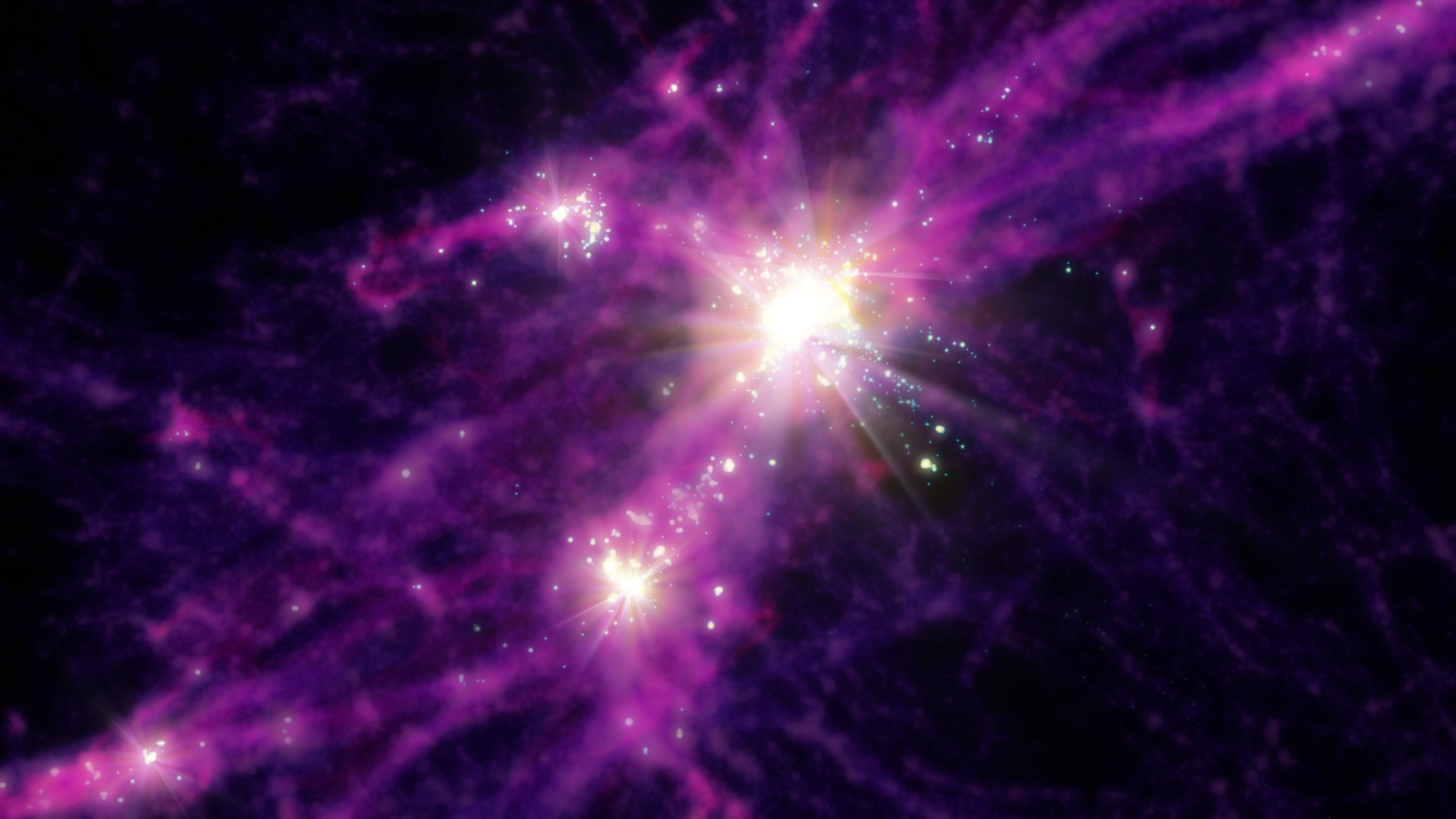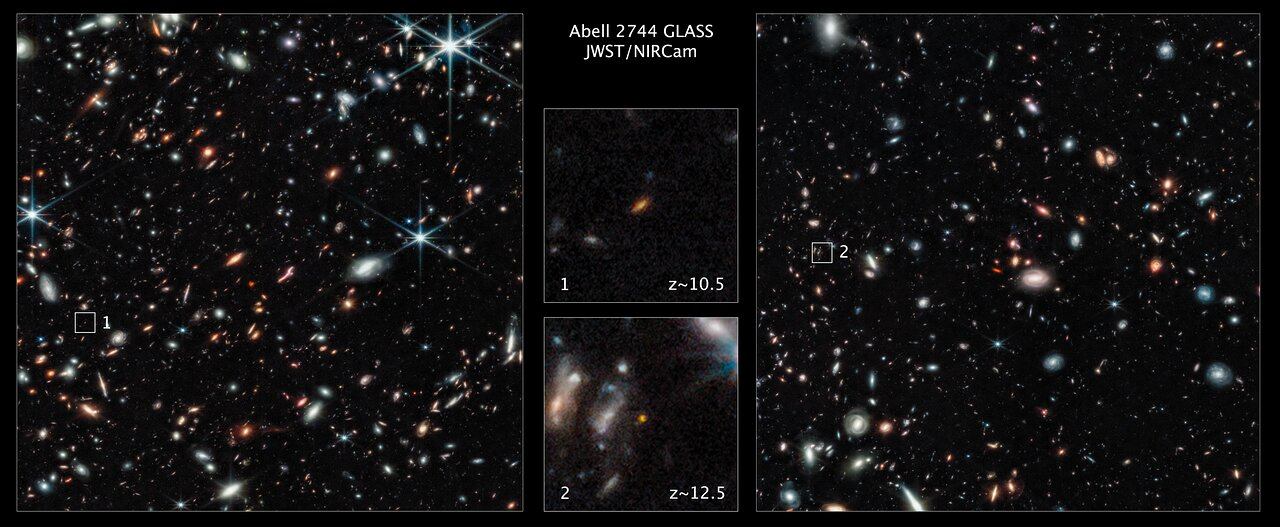The James Webb Space Telescope's early galaxy images were oddly bright. Now we know why
Computer simulations show that the standard model of cosmology isn’t, in fact, broken.

The bright galaxies found by the James Webb Space Telescope (JWST) in the very early universe could be the product of bursts of massive star formation — and it's likely that this fact renders the galaxies more luminous than expected for the era in which they exist. This is the conclusion drawn by researchers who used computer simulations to model how these galaxies formed and began producing stars.
When the JWST began science operations in the summer of 2022, its deep observations of the universe quickly began turning up high-redshift galaxies. These are galaxies that seemed to have existed earlier in the universe than astronomers had ever seen before. In fact, the galaxies, which were seen as they were when the universe was less than 400 million years old, appeared more luminous than what the standard model of cosmology predicts for the era. This led to claims that the standard model —which depicts galaxies starting off small and then growing hierarchically through mergers driven by filaments and haloes of dark matter in the cosmic web — must be wrong.
"The discovery of these galaxies was a big surprise because they were substantially brighter than anticipated," Claude-André Faucher-Giguère of Northwestern University said in a statement. "Typically, a galaxy is bright because it's big, but since these galaxies formed at cosmic dawn, not enough time has passed since the Big Bang. How could these massive galaxies assemble so quickly?"
Related: James Webb Space Telescope reveals ancient galaxies were more structured than scientists thought
Faucher-Giguère is a member of a team led by Guochao Sun of Caltech, who together are performing simulations of how the first galaxies formed. They found that rather than being big, the galaxies observed by the JWST are luminous because they are seen during a time when they underwent a frenzy of star formation. The simulations succeed in not only modeling the luminosity of the galaxies, but also their abundance, both of which exactly match what the JWST observes.
"A system doesn’t need to be that massive," said Sun. "If star formation happens in bursts, it will emit flashes of light. That is why we see several very bright galaxies."
Starbursts like these are not unusual. Astronomers even witness them happening in galaxies today, sometimes when there has been a collision with another galaxy. This sort of merger can result in molecular gas being stirred up to the point that gravity takes hold and forces the gas to fragment and collapse, forming a bunch of stars all at once. In the early universe, where the environment was still pretty tumultuous, the first galaxies may not have accreted all their star-forming material at an even rate.
Breaking space news, the latest updates on rocket launches, skywatching events and more!
"Bursty star formation is especially common in low-mass galaxies," said Faucher-Giguère. "What we think happens is that a burst of stars form, then a few million years later those stars explode as supernovae. The gas gets kicked out [of the galaxy] and then falls back in to form new stars, driving the cycle of star formation."
In the early universe, galaxies were much smaller than they are today, and grew partly by accreting intergalactic clouds of gas, but also by merging with other galaxies. The larger they became, the more gravity they had, reaching a point where they could hang on to more of their star-forming material. This steadied the rate of star formation, and today galaxies such as our Milky Way form stars at a more sedate pace.
Most importantly, the results from the new simulations fit with the hierarchical growth model of galaxies as depicted in the standard model of cosmology.
"Our simulations show that galaxies have no problem forming this brightness by cosmic dawn,"said Faucher-Giguère.
The findings were published on Oct. 3 in The Astrophysical Journal Letters.

Keith Cooper is a freelance science journalist and editor in the United Kingdom, and has a degree in physics and astrophysics from the University of Manchester. He's the author of "The Contact Paradox: Challenging Our Assumptions in the Search for Extraterrestrial Intelligence" (Bloomsbury Sigma, 2020) and has written articles on astronomy, space, physics and astrobiology for a multitude of magazines and websites.

